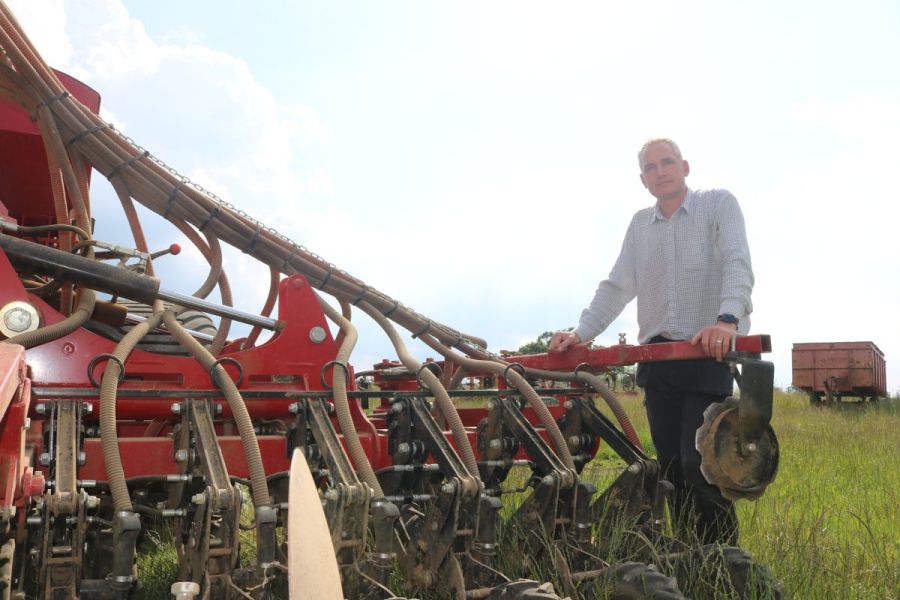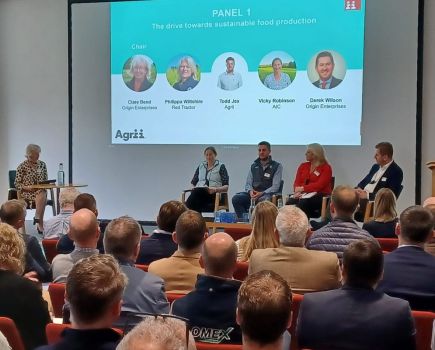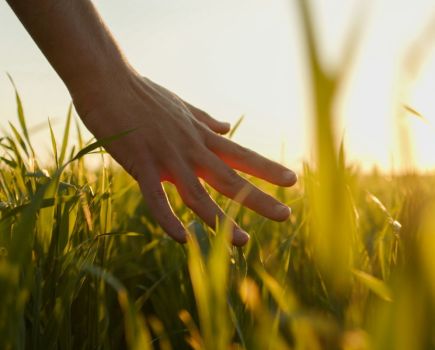A dogged pursuit of crop improvements and a keen interest in trying something new have already brought soil health benefits to a Suffolk family farm. CPM visits to explore where it’s heading.
It’s exciting to do something different. It makes the job so much more enjoyable, even if it does go wrong.
By Tom Allen-Stevens
As Tom Jewers slams the door of the pick-up and grabs his spade, he disturbs a clamour of rooks over the far side of the field of buckwheat he’s about to inspect. He doesn’t seem too concerned at their presence, however.
“Good to see the IPM crew are here this afternoon – hopefully they’ve found a few slugs and grubs,” he remarks. And you’re not entirely sure how serious a suggestion it is.
The buckwheat itself seems to be faring well, with cotyledons emerging above a soil that feels firm underfoot, but slightly springy – like a carpet with good underlay. The Hanslope series chalky boulder clay he turns up with the spade rather worryingly breaks across horizontal fissures. But again, Tom isn’t concerned – a closer inspection reveals it’s honeycombed with wormholes and the creatures themselves are exposed in abundance as he loosens up the clod.
A move away from the plough was one of the first changes GD Jewers & Son took when Tom came into the family farming business, based at Woolpit, Suffolk, in 2007. He farms in partnership with his parents, Dan and Jane, across a total arable area of 390ha.
“We found the plough wasn’t doing anything for us, either for grassweed control or yield, after moving initially to a Knight press, followed by a Horsch Express drill. In 2016, we purchased a 4.8m Weaving GD and now nearly everything is direct-drilled with it. We wanted to go as low disturbance as possible, and tried the John Deere 750A, but it didn’t work for us,” explains Tom.
“These days water rarely lies on the field surface and we can drill in relatively wet conditions. What we like to do is drill into green cover as this keeps the coulters clean, and our cover crops have come along with the cultivation system. We’ve been growing these for over 15 years now, and they’re still not right.”
The farming system Tom describes bears all the hallmarks of a regenerative approach that’s progressing well. But as he talks, you get the feeling his mind actually sits in the next place he wants the farm to be. The rotation is a good example – it puts oilseed rape, achieving 4.5t/ha, after winter barley, then two wheats, averaging 9t/ha and 8.5t/ha respectively, and then into spring barley.
“The break crop that follows is something of a work in progress,” Tom muses. “OSR is the only one that makes any money, although we have had failed crops. We’ve moved away from sugar beet because of the damage it does to the soil, and tried beans and linseed, but they encourage grassweeds. Now we’ve started growing cover crops for seed.”
And this explains the buckwheat. His journey with cover crops started with mustard before sugar beet. “We’ve tried so many different mixes since. Vetch with oats and phacelia work well, but oats and rye are a no in front of spring barley. Radish tends to encourage slugs. We’re finding diverse mixes work best and are currently using around nine different species.”

Buckwheat is a crop Tom Jewers has started to grow as a seed crop as well as a companion with oilseed rape.
These comprise buckwheat, vetch, berseem and crimson clover, niger, millet, radish, phacelia and linseed. So what benefits do they bring? “They’re sucking carbon out of the air and putting it into the soil. They won’t overcome a drainage issue, but we have noticed soil structure has improved. They won’t feed your cash crops, but where we have cover crops, drains take longer before they run and less nitrogen comes out.”
The first one grown for seed was buckwheat, sown into a field where OSR failed. “We ended up combining it for seed and have found there’s quite a market for it. This year we’re also growing phacelia and there’s vetch with a companion crop of mustard. The idea is that the mustard acts as a trellis to support the vetch, then we separate the different-sized seed after harvest. But whether it’ll work, I don’t know,” notes Tom.
It’s another pocket of regen ag he’s been trying across his OSR, too. “We first grew companion crops in 2018, with a 3ha patch sown with vetch designed to help with cabbage stem flea beetle. I got Matt Shardlow of Buglife to come and take a look, and we agreed it hadn’t suffered as much as the rest of the OSR.”
The area’s been gradually stepped up with all of the OSR now sown with a companion, including some last year with white clover and this year with buckwheat. “I’d never say it definitely helps and I’m not completely convinced of the effect on pests – we lost some crop this year for example,” cautions Tom.
“But it does make a contribution – we left a tramline without a companion in one field last year which was completely grazed off by slugs. OSR is P and N hungry, and the theory with buckwheat is that it will help release this from soil reserves. So rather than buying hybrid OSR, I’m hoping a conventional variety with a companion will get the crop we’re looking for.”
Tom moves next to his wheat. KWS Extase, Gleam and LG Astronomer are currently grown, but it’s his field of Garibaldi he’s keen to inspect. The variety is one of the first to appear from Angus Wheat Consultants, also based in Woolpit, and he strokes back the ears to reveal a clean-looking canopy below.
“I really like the look of this – we applied no T0 spray, and some early yellow rust came in. I talked to breeder Bill Angus about it, and he said to hold our nerve and that adult plant resistance would kick in. Sure enough it did, and it’s now clean – it’s extraordinary.
“It’s exciting to do something different, whether that’s a new variety, a new crop, or a whole different approach to crop management. It makes the job so much more enjoyable, even if it does go wrong,” he enthuses.
Tom’s inquisitive nature is what attracted him to the Hutchinsons’ Helix network of farms that put some of the latest crop innovations and technologies to the test. GD Jewers is now in its second full year as the network’s East Anglia Demonstration Farm, and Tom moves to a field where a nitrogen trial has been laid out – the area of work he finds most interesting.
“I’m constantly experimenting with in-field trials but haven’t got the time to do the proper SAP testing and field monitoring to know whether something’s worked. That’s what Helix offers, as well as a look-see at new developments, such as Corteva’s Utrisha and foliar N products. One trial showed us we could get the same results from 160kgN/ha soil-applied plus 6kgN/ha of foliar N as 220kgN/ha all soil-applied.”
He’s cautious about taking results in isolation, however. “We’ve always chopped our straw, for example. We found the straw breakdown used to hold back the second wheats in the autumn, but that doesn’t happen now with direct drilling. My guess is that everything’s cycling correctly which puts us in a good position to tailor our N inputs without compromising yield.”
He’s now looking for the evidence of how the carbon is cycling – the organic matter content of soils across the whole farm has been mapped using Terramap. “This shows 5.7% SOM on average, using the Dumas method, although it varies from less than 1% to over 18%. We have little historical information to show if it’s improving, although a 60ha block has improved by 0.25% on average over four years.”
But here again, what Tom’s really focused on is the next step: he’s on the Farmer Advisory Group of Small Robot Company, and played a key role in co-designing the company’s Tom autonomous robot. He’s also part of a local ‘pod’ of growers that will benefit from its monitoring service that launches this autumn. This will bring per-plant inspections to 20ha of his wheat crop.
“Initially the benefit will be herbicides (see panel on pxx). The potential cost savings are impressive but it’s currently only on broadleaf weeds, and the carbon benefit of reducing pesticides are minimal. I’m looking to being one step ahead of the legislation and also the potential biodiversity benefits of taking out only the weeds that pose a threat to productivity.
“But the real Holy Grail is what we can do when we start tailoring nutrition on a per-plant level. Helix has really opened my eyes to what’s possible when you take tissue samples to find out what’s lacking, but that’s still averaged over a block or field. Imagine if you could monitor crop condition on a per-plant basis and treat accordingly – not just for nutrition, but growth regulation, disease and pest pressure. That for me is the game-changer and it would be so exciting to see that develop here on the farm.”
What makes Tom Jewers a Climate Change Champion?
Innovative ideas
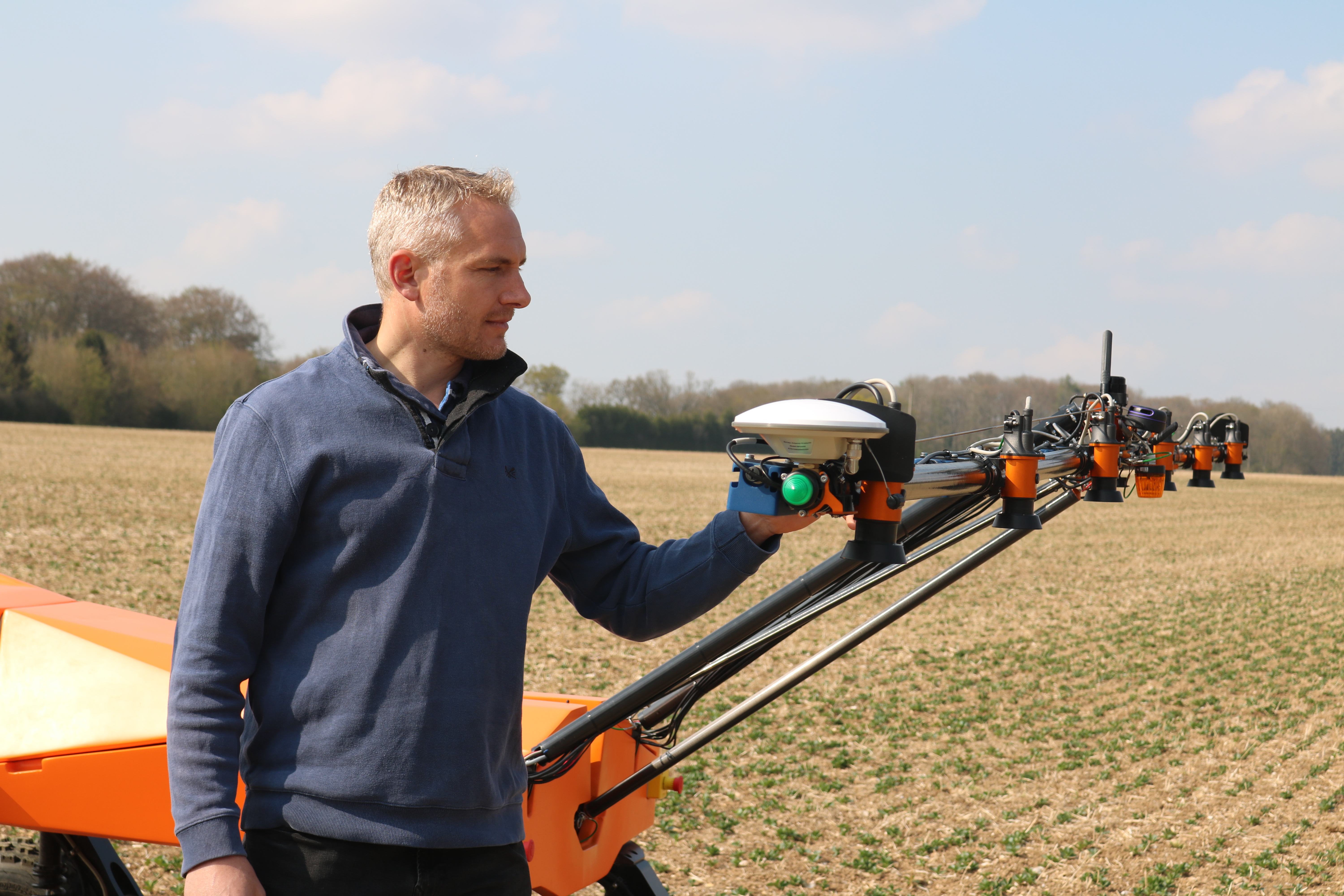
Open to new ideas, Tom is constantly searching for the next step and the technologies that will deliver further benefits.
Tom’s approach to improvements on the farm has been to experiment and learn from the results. Open to new ideas and never happy with what he’s found, he’s constantly searching for the next step and the technologies that will deliver further benefits.
Productivity push
A combination of soil improvement, judicious use of cover crops and a more scientific approach to crop nutrition have led to significant fertiliser savings. Cropping changes bring in further opportunities to boost productivity.
Cultivation care
The farm has successfully managed the transition to minimum-disturbance direct drilling, incorporating the straw to cycle soil carbon and using cover crops to retain and improve structure.
Bio-based boldness
Tom’s inquisitive nature and quest for improvements have made the farm the perfect site for the Helix East Anglia Demonstration Farm. His role on the SRC farmer advisory board brings further benefits to the wider arable farming community.
Trials suggest big savings from per-plant farming
The first precision application of herbicides informed by robots to a UK wheat field was made earlier this year to a crop close to GD Jewers in Suffolk.
The 14.5ha field was surveyed for broadleaf weeds in early spring by Small Robot Company’s Tom autonomous monitoring robot. The data was processed by Wilma, SRC’s AI (artificial intelligence) advice engine, before being passed to local John Deere dealership Tuckwells.
“For us, weed identification is the next step and the AI element is the most exciting part,” enthuses the company’s George Whelan who coordinates its new technologies. “We can use the data from Wilma to create an application map and deliver real in-field solutions.”
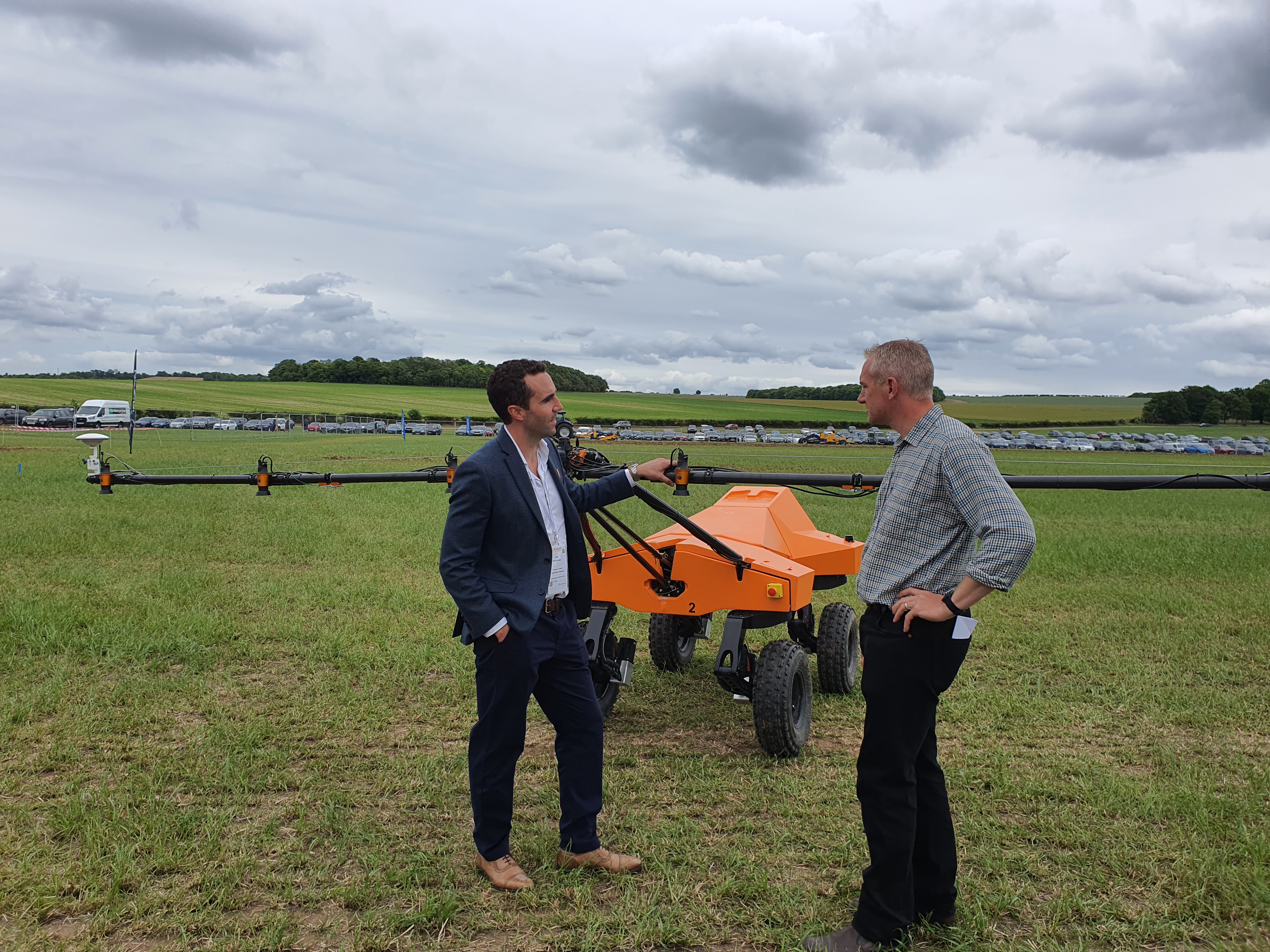
Sam Watson-Jones (left) discusses the new service from Tom (the robot) with Tom (the farmer) at Cereals
The data was run through JD’s Operation Centre and the herbicide applied to the wheat with a Mazzotti sprayer with individual nozzle control over its 36m boom. Just 3% of the field needed to be sprayed, or 0.42ha, resulting in a herbicide saving of £24.48/ha. If the field had been treated with a JD R962i sprayer with 3m section nozzle control, it would have sprayed 13% of the field area, saving £21.92/ha.
SRC president and co-founder Sam Watson-Jones says pilot trials of the service, scanning the crop four times through the season, show it will help cut herbicide applications by around 77% and fertiliser by around 15%. These are achieved through accurately gauging tiller counts and plant populations, as well as through broadleaf weed ID, he notes.
“The advantage of the SRC service is not just the granularity of the survey data – ours has a ground sample distance of 0.39mm. You also know how much you will need to apply before filling up the sprayer – what you put in the tank is what you use, nothing will be wasted.”
Sam believes the input-cost savings are just the start. “The fertiliser savings alone will make a significant contribution to reducing emissions with no loss of crop productivity, while our monitoring service allows for application by exception, rather than blanket precautionary measure.
“But we believe that’s just the tip of the iceberg in terms of the potential for what per-plant farming can deliver, for input-cost savings, yield enhancement and the resulting reduction in greenhouse gas emissions. Tom Jewers is one of many farmers we’re working with to co-create and develop the service. His openness to experiment and dogged pursuit of improvements, always looking for the next step, are what mark him out, which is why SRC is pleased to support his nomination as Climate Change Champion 2022,” concludes Sam.
UK Farming has set itself the challenging target of Net Zero emissions by 2040. Although led by the NFU, it will take the entire industry, working together in a partnership approach to meet this ambitious goal.
But there are individual growers, thought leaders who have already started on this journey. They have the ideas, the progressive outlook and the determination to shape positive change. CPM has teamed up with leading agricultural suppliers who have a credible Net Zero aspiration to identify these individuals and bring them into the top-level discussion about how farming can position itself as the solution to climate change.
CPM would like to thank our sponsors:



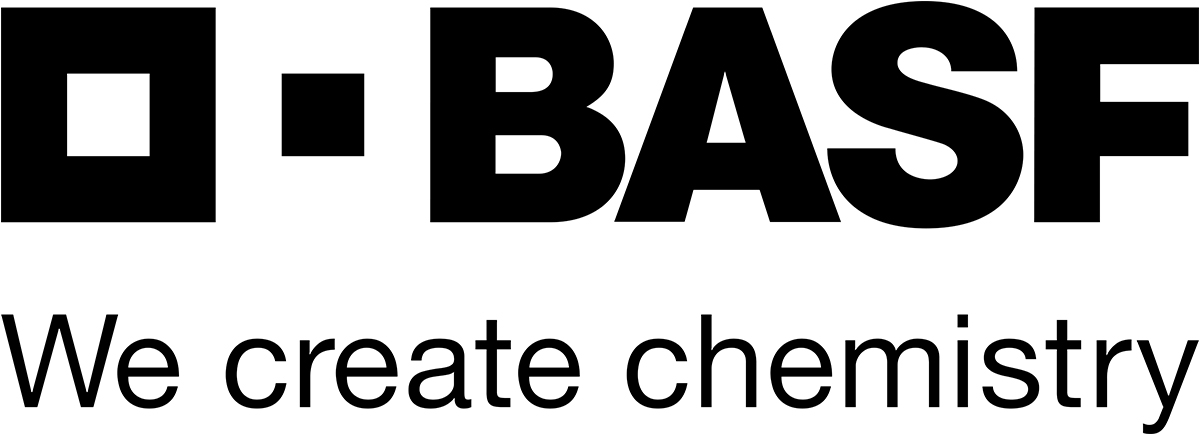
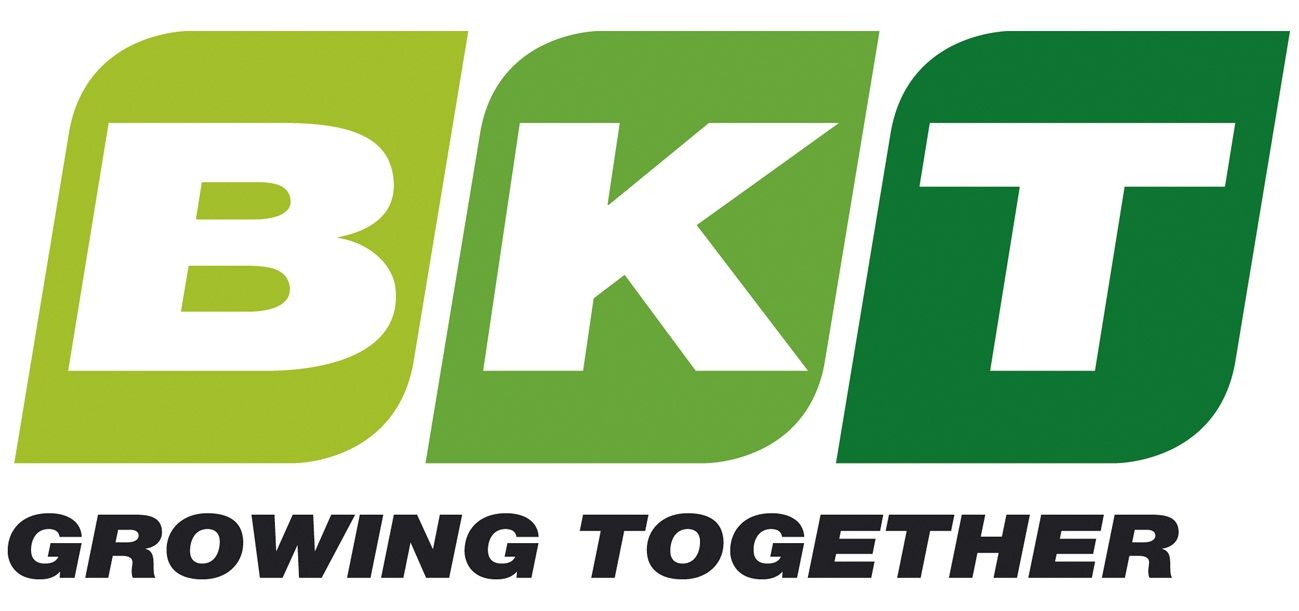

This article was taken from the latest issue of CPM. For more articles like this, subscribe here.

